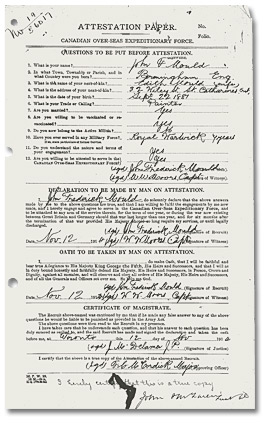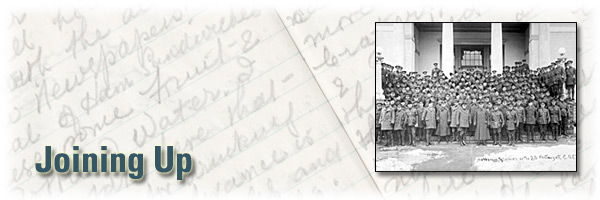
When John joined the Canadian Expeditionary Force in 1914, he was already a veteran. In the initial volume of his diary he tells us something of his past while recounting his first roll call after joining up.
“It
was the morning of the 26th of October (1914) that
I answered the first roll call, it was about 4:30
a.m. as near as I can say. After we had fell in and
numbered off the Corporal in charge of our Section
started giving me the first bit of Army drill I have
had for twelve years. It came a bit strange to me
at first although this is not my first experience
of Army Life, my seven years of soldiering was done
with the Royal Warwickshire Regiment, Warwick, England,
with whom I saw service in South Africa at the time
of the Boer War.
I was born in Birmingham,
England, and came out to Canada in the year 1910,
so that is how I came to join the 19th Lincoln Regiment,
St. Catharines, after which we was attached to the
19th Battalion, 2nd C.E.F. Ontario, it being made
up of so many men from each city.”
John Mould's
Diary
Click here to listen to an excerpt from the diary in "wav" format (1.1Mb). It is also available in "aif" format (1.1Mb).
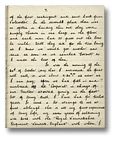
Click to see a larger image (153K)
John
Mould's Diary
Vol. 1 pp. 7, 1914
John F. Mould fonds
Reference Code:
F 954
Archives of Ontario
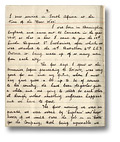
Click to see a larger image (155K)
John
Mould's Diary
Vol. 1 pp. 8, 1914
John F. Mould fonds
Reference Code:
F 954
Archives of Ontario
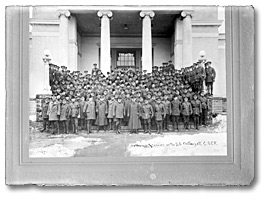
Click to see a larger image (76K)
H.Q.'s staff and officers of 2d contingent, C.O.E.F., [1914]
A. W. Barton
Glass plate negative
Reference Code: C 121-1-0-13-32
Archives of Ontario, I0019375
John had already done his duty for King and Empire during the Boer War (1899-1902) and, at 33, he was no longer a very young man. His wife Edith was adamant that he not join up and she had already refused to give her consent to let him enlist. But his own sense of his duty would not let him stop trying.
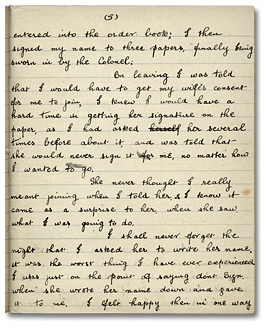
Click to see a larger image (147K)
John Mould's Diary
Vol. 1 p. 5, 1914
John F. Mould fonds
Reference Code: F 954
Archives of Ontario
“I shall never forget the night that I asked her to write her name, it was the worst thing I have ever experienced. I was just on the point of saying don’t sign, when she wrote her name down and gave it to me. I felt happy then in one way, but sorry in another, because I know that nothing worse could have happened, both to be parted from one another especially in a case of this sort.”
John Mould's Diary
Vol. 1 pp. 5-6, 1914
John F. Mould fonds
Reference Code: F 954
Archives of Ontario
Fortunately, John’s training was to take place in Toronto, close enough to St. Catharines that they would be able to see each other from time to time.
Upon enlisting, John and his friend Thomas Blakie, were asked to be cooks for the company and they happily agreed. On November 3rd, they boarded a train taking them to the grounds of the Canadian National Exhibition in Toronto where the company was to be billeted and receive training.
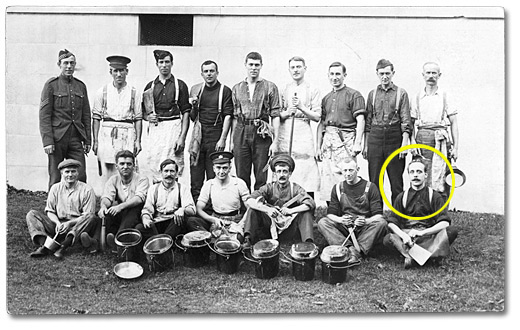
Click to see a larger image (247K)
Cooks of the 19th Battalion, 1915
John F. Mould fonds
Reference Code: F 954
Archives of Ontario, I0024379
“We were met there by Quarter Master Sergeant McClaren who gave the order for all cooks to report themselves to Sergeant Stevens, he being in charge of the Cookhouse … we reported ourselves to the sergeant cook, [and] after giving him our names and the Company we belonged to, we started to get busy. There was something like twelve hundred knives, forks, spoons and basins which had to be unwrapped and washed in hot water, as they had only come in from the dealers the same day. There were nineteen cooks altogether, including the Sergeant, and I don’t believe there was one, who thought much of the kitchen or the cooking arrangements, but after we had given the stoves, etc. a good brush down, and gave the kitchen a good cleaning to, things looked much better than they did when we arrived.”
John Mould's
Diary
Click here to listen to an excerpt from
the diary in "wav" format (1.8Mb).
It is also available in "aif" format (1.8Mb).
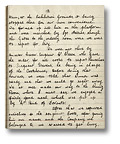
Click
to see a larger image (157K)7K)
John
Mould's Diary
Vol. 1 pp. 12, 1914
John F. Mould fonds
Ref. Code: F 954
Archives of Ontario
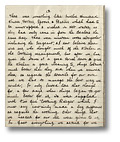
Click
to see a larger image (168K)
John
Mould's Diary
Vol. 1 pp. 13, 1914
John F. Mould fonds
Ref. Code: F 954
Archives of Ontario
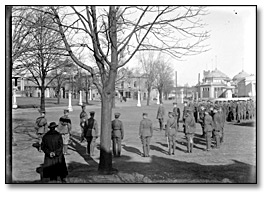
Click
to see a larger image (88K)
Soldiers at Canadian National Exhibition, [1914]
A. W. Barton
Glass plate negative
Reference Code: C 121-1-0-13-7
Archives of Ontario, I0019350
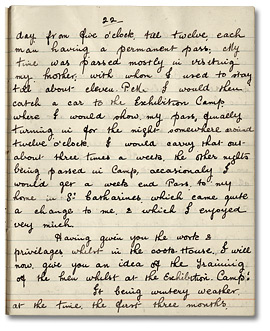
Click to see a larger image (159K)9K)
John Mould's Diary
Vol. 1 p. 22, 1915
John F. Mould fonds
Reference Code: F 954
Archives of Ontario
“It
being wintery weather at the time, the first three
months was very cold and windy. There was also a great
deal of snow about and it was very slippery, it freezing
very hard during the night. Overcoats were worn on
every parade, and also overshoes and mitts…
The time for rising would
be six o’clock, roll call at six thirty, after
which each man would have to parade and answer his
name to their respective Platoon sergeants. This was
carried out inside the building, it being too dark
outside to read the list of names to be called. This
occupying but a very short time, the men would then
prepare for breakfast…
John Mould's
Diary
Click here to listen to an excerpt from the diary in "wav" format (1.71Mb). It is also available in "aif" format (1.71Mb).
When John Mould joined the Canadian Over-Seas Expeditionary Force in 1914, one of the first things he had to do was fill out a form. These forms were called attestation papers, and in addition to asking for personal information, like date of birth, the form asked the recruit to attest to his willingness to serve for the duration of the war, and to declare his allegiance to the King. Like the 600,000 other men who joined up, John filled out this form and it was duly filed away with millions of other war records.
“From
then [8 a.m.] till 9 o’clock would be passed
in cleaning buttons, etc. for parade which would take
place till about eleven forty five, the men being
kept at it pretty good during that time. The order
of drilling for this two hours and three quarters
was as follows: from nine till ten, would be physical
drill. Ten o’clock till ten forty five, bayonet
charging, after which there would be an interval of
fifteen minutes. Signalling would then be given for
the remainder of the time, when they would be dismissed
for dinner, the hour of this being from twelve till
one.
A rest would be taken
then till two o’clock when the afternoon parade
took place, this taking about two hours and half.
The drill for this, being mostly confined to skirmishing
or extending order. Tea would follow this, the time
being from five till 5:30, after which they had the
rest of the day to themselves. In my idea the men
were kept at it too long, and did not have much time
for recreation.
The same order of drill
was carried out mostly the same every day until the
weather began to get a bit brighter and warmer, when
a series of route marches began, being carried out
about three times each week. There were also the regular
course of firing which was carried out at the ranges,
at Long Branch, the distance to there being about
twelve miles from the Exhibition Camp. The firing
was done by Companys, each one taking their turn of
two days each….
John Mould's
Diary
Click here to listen to an excerpt from the diary in "wav" format (2.5Mb). It is also available in "aif" format (2.5Mb).
In 1996, the National Archives
began a digitization program to scan all these attestation
papers, and make them available through Archivianet, their
on-line database. To date over 800,000 images of attestation
papers have been scanned and are now available at: http://www.collectionscanada.gc.ca/whats-new/013-285-e.html
Did one of your ancestor’s serve in the CEF during WWI?
Check out the database and see if you can find his attestation
papers, just like we found Private Mould’s.
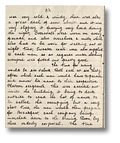
Click
to see a larger image (150K)
John
Mould's Diary
Vol. 1 pp. 23, 1915
John F. Mould fonds
Ref. Code: F 954
Archives of Ontario
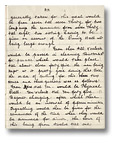
Click
to see a larger image (158K)
John
Mould's Diary
Vol. 1 pp. 24, 1915
John F. Mould fonds
Ref. Code: F 954
Archives of Ontario
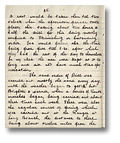
Click
to see a larger image (156K)
John
Mould's Diary
Vol. 1 pp. 25, 1915
John F. Mould fonds
Ref. Code: F 954
Archives of Ontario
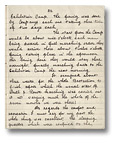
Click
to see a larger image (148K)
John
Mould's Diary
Vol. 1 pp. 26, 1915
John F. Mould fonds
Ref. Code: F 954
Archives of Ontario
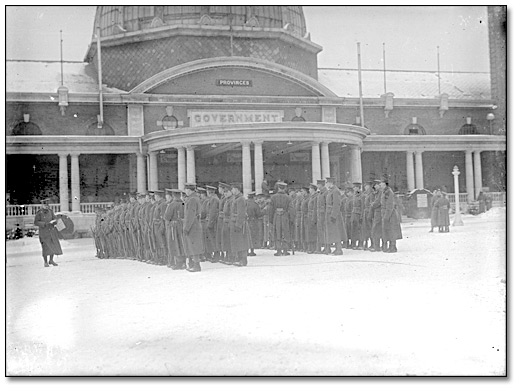
Click to see a larger image (212K)
Troops in front of Government Building, C.N.E. (Canadian National Exhibition), Toronto
A. W. Barton
Glass plate negative
Reference Code: C 121-1-0-13-30
Archives of Ontario, I0019373
Finally, on May the 12th, 1915, Private Mould and the whole rest of the Battalion were loaded onto a train bound for Montreal. After all this time of wondering when they were ever going to be sent to fight, the men were excited to be heading for the ship that would carry them to England from where they would embark for France. Once at the Port of Montreal, they boarded the old Allan Line steamer, the Scandinavian, and said goodbye to Canada. Many would not return.
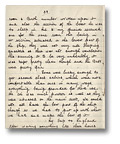
Click
to see a larger image (154K)
John
Mould's Diary
Vol. 1 pp. 39, 1915
John F. Mould fonds
Ref. Code: F 954
Archives of Ontario
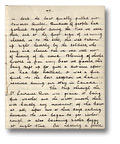
Click
to see a larger image (160K)
John
Mould's Diary
Vol. 1 pp. 40, 1915
John F. Mould fonds
Ref. Code: F 954
Archives of Ontario
“After waiting something like three hours in dock, the boat finally pulled out towards Quebec. Hundreds of people had gathered together during the time we were there, and at the first sign of us moving cheered us to the echo. This was taken up right heartily by the soldiers, who sang and cheered till we were well out of hearing of the crowd. Blowing of whistles greeted us from every boat we passed, this being kept up for quite a distance after we had left Montreal. It was a fine finish to the best reception we had received during our stay in Canada.”
John Mould's
Diary
Click here to listen to an excerpt from
the diary in "wav" format (1.4Mb).
It is also available in "aif" format (1.4Mb).
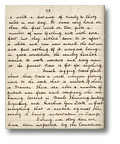
Click to see a larger image (161K)
John Mould's Diary
Vol. 1 p. 53, 1915
John F. Mould fonds
Ref. Code: F 954
Archives of Ontario
The Scandinavian landed at Plymouth, England on May 21st. The English people greeted the Canadian soldiers warmly, and cheered them on their way as they boarded the train to their camp which was called West Sandling. It was located about nine miles from Dover and accommodated four Battalions. While there, the soldiers were kept busy learning the skills they would need in France and Belgium: marching 20 to 30 miles a day and digging trenches.
“Trench digging takes place about three times a week, everyone getting used to the work that is needed of them in France. There are also a number of picked men from each Company who are having lessons in Bomb Throwing, Scouting, Signalling and Machine Gun Work - in fact everything that is needed against the enemy is being undertaken in Camp.”
John Mould's
Diary
Click here to listen to an excerpt from
the diary in "wav" format (939K).
It is also available in "aif" format (939K).
The monotonous routine in the camp continued until they left for France on September 14th, 1915. By September 20th the soldiers were already in the trenches and under enemy fire.
Private Mould continued to recount his wartime experiences in his diary and it tells a story of toil and boredom, interspersed with periods of almost unendurable fear.

Click to see a larger image (485K)
John Mould's Diary
Vol. 2 pp. 54-55, 1915
John F. Mould fonds
Reference Code: F 954 F 954
Archives of Ontario
Mud, nearly constant rain and freezing temperatures, lack of sleep and noise all took their toll on the men. The following excerpt gives some idea of the joy that something as simple as a bath could bring.
![Photo: Soldier standing at attention, [1914]](pics/19346_soldier_with_gun_270.jpg)
Click
to see a larger image (110K)
Soldier standing at attention, [1914]
A. W. Barton
Glass plate negative
Reference Code: C 121-1-0-13-30
Archives of Ontario, I0019346
“Saturday Oct. 2nd – Shortly after breakfast, the company were taken in batches of 30 to Dranoutre a distance of 2 miles. Here we were taken to a bath house where hot water, soap and towels were to be had for our use. Tubs just large enough to sit in were supplied for bathing – 12 men being able to occupy the place at one time, 15 minutes being allowed for each batch. We all received new clothing after bathing in exchange for our old ones. We had not taken our clothes off since leaving England [Sept. 14], so you can guess the change it made in us. We felt just like new men and fit for anything.”
John Mould's
Diary
Click here to listen to an excerpt from the diary in "wav" format (1.7Mb). It is also available in "aif" format (1.7Mb).
At this point in the story, we will skip ahead about a year to August 1916, when he writes of his experiences at the Battle of the Somme. Visitors to this web exhibit who are interested in seeing the intervening passages in the diary are invited to come and read the original volumes at the Archives.
